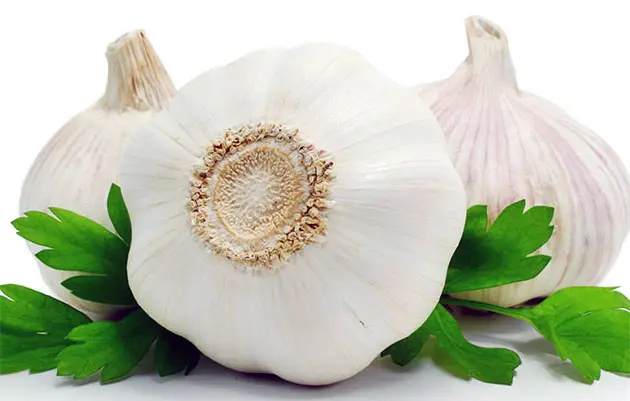Garlic is a well-known garden plant used as a seasoning. Its history, much like that of onions, is so ancient that it’s hard to pinpoint its origins. Today, it feels as if garlic has been rediscovered, as it stands out as a kind of medicinal “giant.” However, its strong and pungent aroma leads many to avoid it.
Our ancestors consumed garlic frequently and with enthusiasm. The ancient Greek physician Dioscorides claimed that “garlic cleanses the arteries.” The Romans added that “it cures coughs and pneumonia.” About a thousand years ago, a Persian compendium on the medicinal properties of plants asserted that garlic has protective qualities against “blood clotting.”
Modern medical research not only confirms these ancient beliefs but also expands our understanding of garlic’s healing potential. Indeed, garlic is used to treat nearly all ailments—from the common cold to the early signs of aging.
Its antimicrobial properties are well-known.
The characteristic smell and taste of garlic come from its essential oil, which contains organic sulfur compounds. These compounds are lethal to microorganisms, and their medicinal properties are well recognized.
Garlic also contains flavonoids that relax blood vessel spasms, lower blood pressure, and help eliminate cholesterol. It is rich in potassium, calcium, sodium, magnesium, and phosphorus.
Garlic paste and juice are used to treat wounds, ulcers, and burns, and are applied in dentistry, gynecology, and otolaryngology. During World War II, when antibiotics were not widely available, garlic often came to the rescue in medicine—it destroyed the pathogens of tuberculosis, cholera, typhoid fever, and paratyphoid, as well as staphylococci and streptococci. Garlic paste, juice, or inhalations are used to treat acute respiratory diseases, whooping cough, pharyngitis, angina, and both catarrhal and purulent middle ear infections. By suppressing harmful microorganisms, garlic exhibits anti-inflammatory and wound-healing properties.
Scientific medicine has confirmed the ancient knowledge that garlic cleanses the arteries. Its biologically active substances neutralize fatty compounds that contribute to atherosclerosis.
For treating heart diseases with atherosclerotic changes, herbalists recommend that patients consume up to 20 cloves (about 60 grams) of garlic daily, often in the form of an extract. To achieve the desired effect, this regimen should be followed for three months. Most patients (83 percent) report feeling significantly healthier after such a course, and nearly all show improvements in signs of heart disease.
Everyone knows that garlic is an effective remedy for colds. Its “healing treasures” improve breathing, soothe coughs, treat bronchitis, and even slow the division and growth of cancer cells, as confirmed by Japanese researchers.
Garlic acts as an antimicrobial agent during inflammatory processes in lung tissue, even when inflammation is complicated by pus formation. It disinfects the digestive tract.
In Greece, garlic has been used for thousands of years to combat hypertension. Our traditional medicine has long recognized this. Dr. M.S. Alexander Sishin concluded that 40 percent of patients with kidney-related high blood pressure can be treated with this remedy.
To put it in numbers, among 100,000 patients with hypertension not related to heart disease, 39 die annually in the U.S., 35 in Italy, and only 14 in Spain, a country known for its garlic consumption.
Garlic is also known for its anti-parasitic effects (it can expel pinworms through enemas).
To cleanse the mouth of harmful microbes, chewing garlic for a few minutes is effective. It simultaneously strengthens the gums, reduces inflammation, and lowers the incidence of cavities.
Garlic cloves contain adenosine, which slows down the formation of blood clots and dilates coronary vessels, making it useful in treating vascular thrombosis and angina.
Garlic lowers blood sugar levels and enhances glycogen production in the liver, making it a helpful medicinal aid for diabetes. It is also used in cases of lead poisoning.
Currently, it is known that in countries where garlic is consumed in large quantities, cancer is less prevalent. Observations by Soviet researchers have shown that garlic preparations are particularly effective in treating cancer. It is also beneficial for people living in areas contaminated by radioactive emissions.
Garlic is a radical healing remedy. The strong odor it leaves in the mouth can easily be neutralized by chewing fresh roots or leaves of parsley, celery, anise seeds, or coffee beans.

